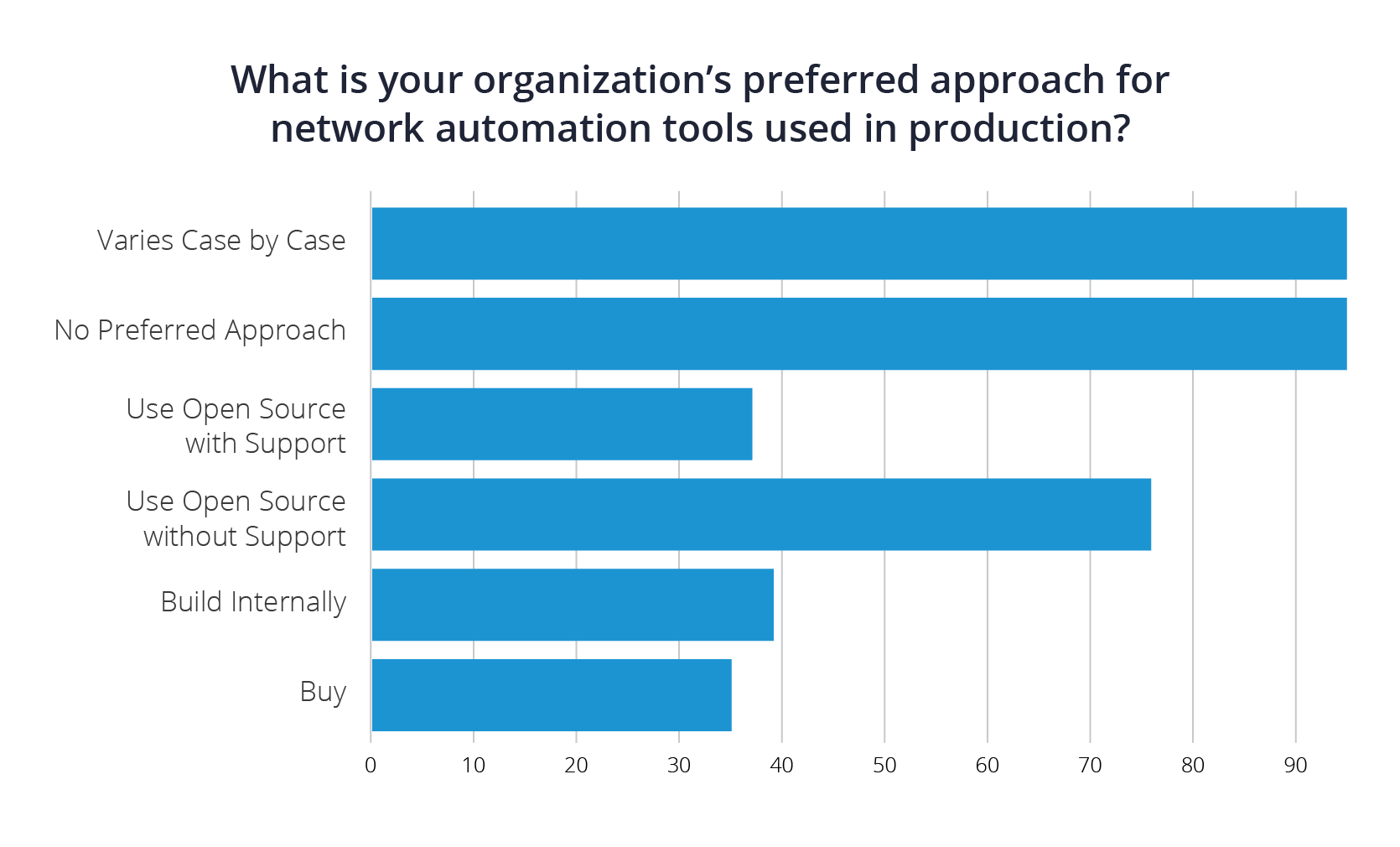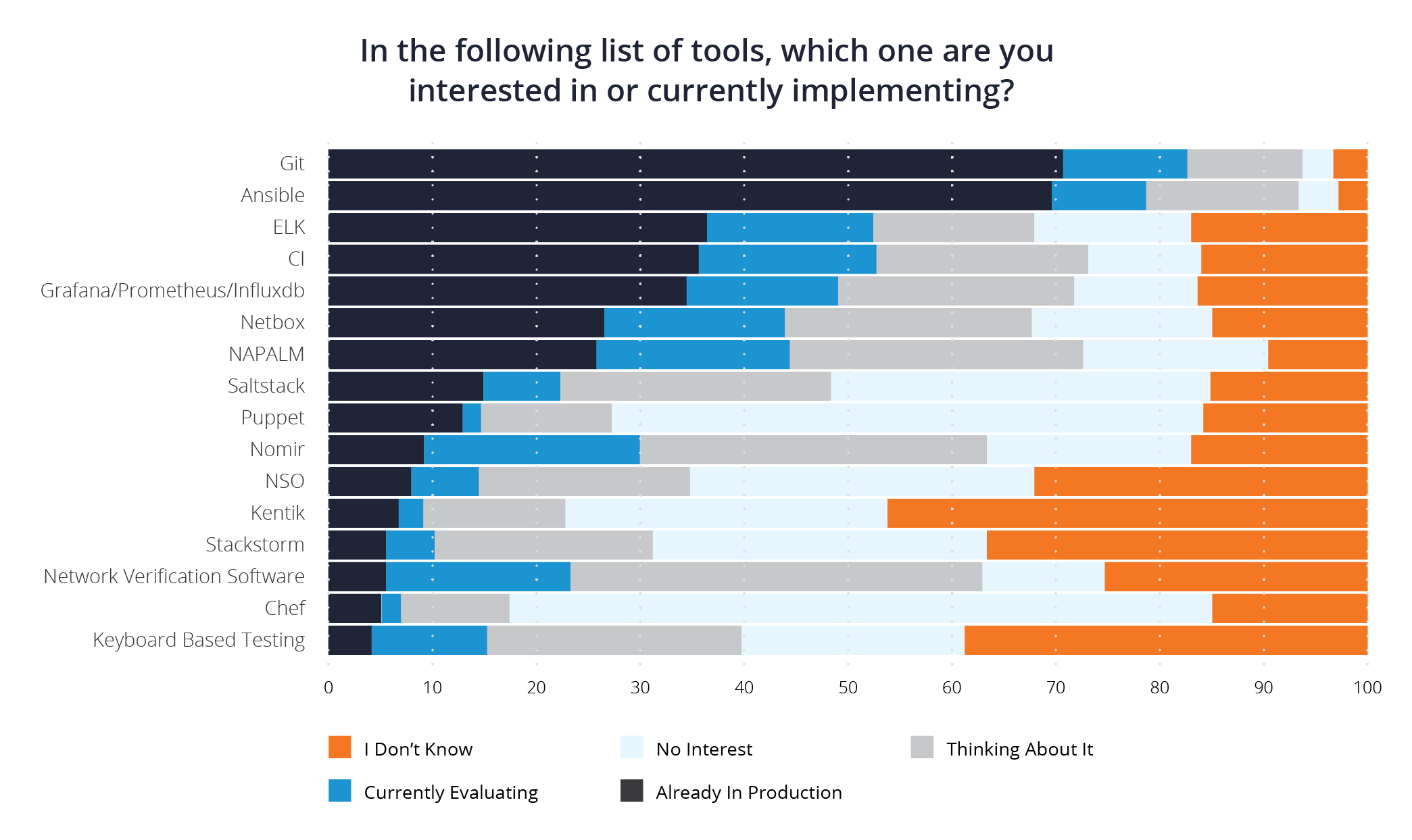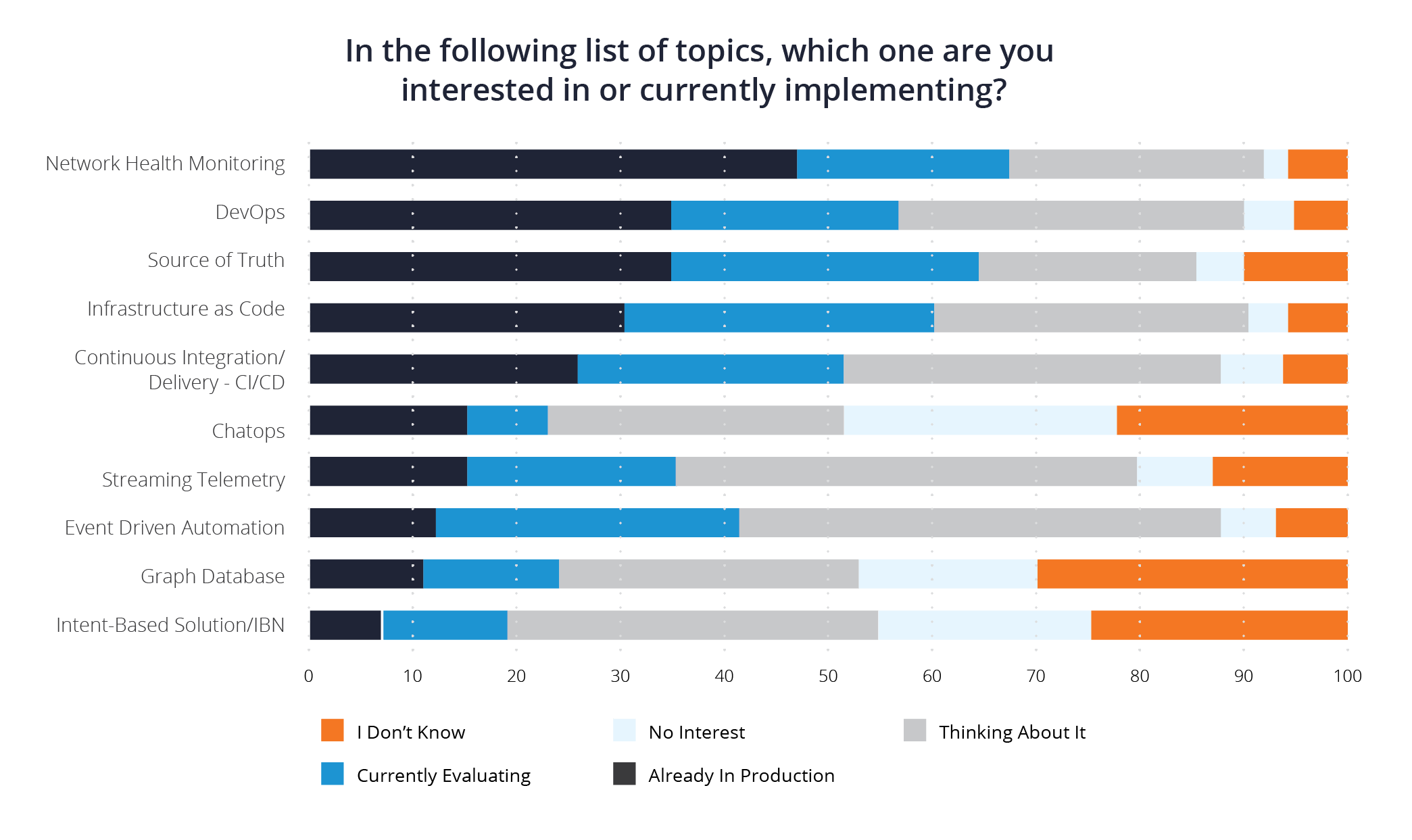In my previous blog post, I provided some insight into Network to Code’s annual NetDevOps survey results. Regarding network automation, the survey showed that organizations have maintained a slow and steady pace for the last several years, and there are several factors for this lack of acceleration. However, due to the complexity of today’s networks, the time and complexity it takes to transition skillsets from an engineer to an automation expert and more, slow and steady will not win the race.
Why Slow & Steady Won’t Win the Race
With all due respect to the tortoise, the old adage that “Slow and Steady Wins the Race” doesn’t apply to network automation. For years, networking teams have suffered through a lack of tools and systems to facilitate automation. Now that those tools and systems are available, a culture has evolved over the years that has decided that network automation is not a high priority. According to the NetDevOps survey, organizations have either no preferred approach or take it as a case by case basis when it comes to selecting the tools to use for network automation.

This points to a lack of knowledge of the available tools, or a lack of focus to automate and this position can no longer be maintained. Not only have we seen the benefits of automation in other technology domains, like systems and applications, we’ve also seen the growth of the public cloud which automates everything, including networking constructs like VPCs and VNETs. It’s time for organizations to finally see the immediate need in network automation and make it a priority.
The time to start automating is now and focusing on the immediate low hanging fruit has always been a good place to start. It will be helpful to ask a few questions:
- What networking tasks are in the backlog for your team?
- Are they highly repeatable processes?
- What tools, whether open-sourced or from a vendor, are already available to address this need?
Typically, we see the top use cases to get started with being operations like software upgrades for network devices, configuration and compliance, or device deployments.
Once these tasks are automated and the team has built a nice library to chew through the backlog, it’s time to move on to the next step. It will be helpful to ask these questions:
- Can these automations be used in conjunction with one another?
- Can these tasks be used in a larger automation? For instance, if I have created a task to automate a branch office deployment and a task that can update ACL configuration in the Data Center, is there a process that could use both automations to work together in order to provide even more efficiency?
Expand this to now thinking about systems in the networking control that may have APIs available that can reduce the amount of swivel chair time that a person would spend accessing these systems. A perfect example of this would be an IPAM system, where you can automate accessing information for IP addresses and DNS settings through APIs.
Once automation is available across the devices and systems within the networking domain, expand the thinking outside of the networking organization. What other systems within the IT domain can we extend automation into. Now you are looking into true multi-domain network automation, and this is where the greatest amount of value is realized for the business. The entire process of creating a new service, from the initial request to the completion and closing of the ticket is the goal we are looking at achieving. This will include collaboration with teams in different IT organizations and integration with their existing tools, systems and automations. Most of these systems already have well-defined APIs that will enable automation. Systems like IT service management, change management, and controllers for virtualized and storage domains become part of the automation process and will have the ability to reduce the time to deploy service and applications from weeks to minutes.
What’s Next for Network Automation?
We all understand that network automation is a long journey ahead and we need to get started immediately, keeping our heads down and focusing on one step at a time, knowing that the journey will make the entire organization stronger. The NetDevOps survey showed us that there is a lot of interest in tools like Git, Ansible, and ELK as well as automation topics like Infrastructure as Code (IaC) , CI/CD, and Source of Truth, so it’s clear that great work is well underway and will hopefully accelerate in the near future. Every once in a while, make sure to glance up at the horizon to make sure you are aware of the what’s ahead, so that you can keep in alignment with the future.


Another big trend approaching is the need for multi-cloud network automation. Organizations are deploying applications and services in the cloud, but the cloud isn’t a single environment. They are deploying some applications in AWS as a standard, using Azure for services like Office 365, and then using Google Cloud Platform for specialized applications due to performance requirements. End users in the organization may be at a corporate office, branch office or remotely located and will need to access some or all of these services. Distributed security devices will need to be part of the data path, whether physical or virtual, and there will be multiple systems and services available to networking teams to deal with the complexity. The network automation processes that you start on today will eventually lead into a multi-cloud network environment, and automation across all of these services will be a necessary step of the automation journey.
The Value of Automation
At Itential, we believe that all automation is valuable, especially in today’s environment and the need to quickly and confidently make changes to the network in response to business needs is what we have focused on for many years. The Itential Automation Platform is purpose-built to empower the networking team to immediately work on creating automation tasks in a low code, drag-and-drop environment through our Automation Studio. We freely offer all of our adapters to our users, which allow the platform to interface with systems and services through APIs. Additionally, we also freely provide Pre-Built Automations, like software upgrades, configuration compliance, and AWS VPC provisioning for cloud networking so that our customers can immediately start experiencing the benefits of network automation within days, not months or years. As the journey continues to move forward, our platform is built to automate across multiple domains within organizations and enables DevOps teams to bring their existing systems and tools into the platform to create true end-to-end automation in collaboration with the networking team. Regardless of what platform, tools and systems you choose, we encourage all of our friends in the networking world to get started on their automation journey today.


